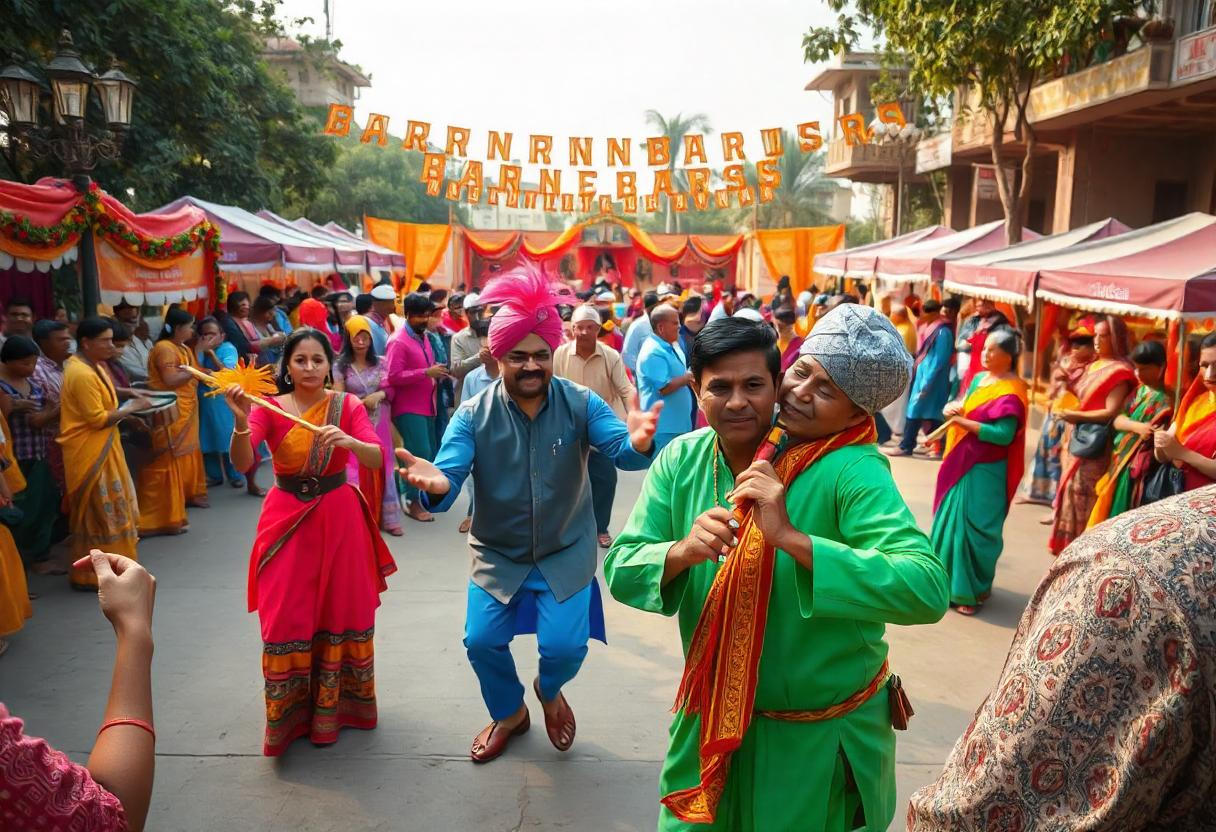Barna Barsi is more than just a cultural event; it’s a vibrant tradition deeply rooted in the heritage of its region. Marked by music, rituals, and communal joy, this celebration unites people in honoring their ancestry and embracing togetherness. In this article, we will explore the origins, significance, and traditions of Barna Barsi, uncovering why it remains a cherished event for so many.
The Origins of Barna Barsi
Barna Barsi traces its roots to centuries-old traditions passed down through generations. Originating in rural communities, this celebration was initially a way to mark significant milestones, whether personal, agricultural, or communal. Over time, it has evolved into a multifaceted event that reflects the spirit of unity and cultural pride.
Symbolism Behind the Name
The term “Barna Barsi” holds symbolic significance, often tied to themes of renewal, gratitude, and prosperity. Its name, though varying slightly in interpretation across regions, reflects the essence of celebrating life’s blessings.
Key Elements of Barna Barsi
What sets Barna Barsi apart is the combination of rituals, festivities, and community involvement. These elements come together to create an unforgettable experience.
Traditional Music and Dance
- Folk songs are a cornerstone of Barna Barsi, often performed with traditional instruments like dhols and flutes.
- Dance forms, such as circle dances or paired routines, add energy and color to the event.
- Performers wear vibrant costumes that reflect the cultural identity of the region.
Cultural Rituals
Rituals play a central role in Barna Barsi, varying slightly depending on the community. Common practices include:
- Offering Prayers: To ancestors or deities, seeking blessings for the year ahead.
- Symbolic Acts: Lighting lamps, decorating homes, or planting trees to signify renewal.
Feasting and Sharing Food
Food is a major highlight, with traditional dishes prepared and shared among attendees. Popular items include:
- Sweet treats made from local ingredients.
- Savory dishes seasoned with spices unique to the region.
- Communal meals served on banana leaves or earthenware plates.
How Barna Barsi Strengthens Community Bonds
Barna Barsi is more than an individual celebration; it’s a communal experience that fosters unity and togetherness.
Collaborative Preparations
- Villagers or community members come together to plan and organize the event.
- Tasks like setting up venues, preparing food, and decorating spaces are shared among participants.
Inclusive Participation
- The event welcomes people of all ages, from children to the elderly.
- Performances and activities are designed to engage everyone, creating a sense of belonging.
Cultural Exchange
- Visitors from neighboring regions often join in, bringing their own traditions and enriching the experience.
The Role of Barna Barsi in Preserving Heritage
In a rapidly modernizing world, Barna Barsi serves as a reminder of the importance of cultural heritage.
Passing Down Traditions
- Elders share stories, songs, and rituals with younger generations.
- The event creates an opportunity for learning and preserving customs.
Celebrating Identity
- Barna Barsi is a platform to showcase regional art, craft, and cuisine.
- It instills pride in one’s cultural identity, ensuring it thrives amidst change.
Planning Your Visit to a Barna Barsi Celebration
If you’re planning to attend Barna Barsi for the first time, here’s how to make the most of your experience:
What to Wear
- Opt for traditional attire to immerse yourself fully in the spirit of the event.
- Comfortable footwear is recommended, as many activities involve dancing and walking.
What to Bring
- A camera to capture the vibrant moments (if allowed).
- A small gift or token of gratitude if you’re visiting as a guest.
How to Participate
- Join the community dances to experience the joy of collective celebration.
- Sample the local cuisine and engage in conversations with attendees.
- Respect the rituals and traditions by observing or participating as guided.
Highlights of a Typical Barna Barsi Celebration
A Barna Barsi event is packed with activities that keep attendees engaged throughout the day:
- Morning Prayers: Rituals are conducted early in the day, often at a temple or sacred site.
- Cultural Performances: Folk artists perform songs, dances, and skits reflecting local themes.
- Competitions: Friendly contests, such as traditional games or cooking challenges, are held.
- Grand Feast: Attendees gather to share a communal meal, featuring an array of delicious dishes.
- Evening Celebrations: The event concludes with music, dancing, and fireworks.
Barna Barsi in Modern Times
While rooted in tradition, Barna Barsi has adapted to modern times without losing its essence.
Incorporating Technology
- Live streaming and social media coverage have made the celebration accessible to a global audience.
- Digital platforms are used to promote the event and attract visitors.
Evolving Traditions
- New elements, like contemporary performances, are blended with traditional activities.
- Sustainability practices, such as eco-friendly decorations, are increasingly emphasized.
The Future of Barna Barsi
As cultural celebrations gain renewed interest, the future of Barna Barsi looks promising:
- Cultural Revival: Efforts to document and preserve rituals are helping the tradition thrive.
- Tourism Potential: With proper promotion, Barna Barsi can attract cultural tourism, boosting local economies.
- Community Development: The event serves as a platform to address social issues and foster development initiatives.
Also read: Golden Apple Buffet: A Culinary Paradise for Food Lovers
Conclusion
Barna Barsi is more than just a festival; it’s a testament to the enduring power of culture and community. By celebrating traditions, fostering unity, and adapting to modern times, it remains a vibrant and meaningful event. Whether you’re a local participant or a curious visitor, experiencing Barna Barsi is a journey into the heart of cultural heritage.
FAQs
What does Barna Barsi celebrate?
Barna Barsi celebrates cultural heritage, community bonds, and gratitude for life’s blessings.
How long does Barna Barsi last?
The event typically spans one to three days, depending on the community and traditions observed.
Can tourists attend Barna Barsi?
Yes, visitors are often welcomed, but it’s important to respect the customs and practices of the host community.
What kind of food is served during Barna Barsi?
Traditional dishes made from locally sourced ingredients, including sweets, savory snacks, and hearty main courses.
Is Barna Barsi celebrated across India?
While Barna Barsi is prominent in specific regions, similar celebrations with different names and customs exist nationwide.
How can I learn more about Barna Barsi?
Connecting with locals, reading cultural literature, or attending a celebration are great ways to learn more.



